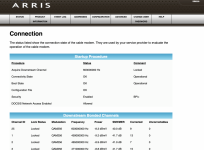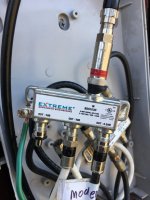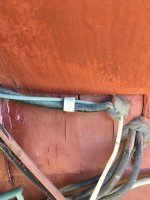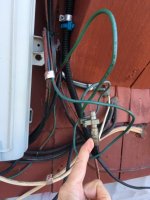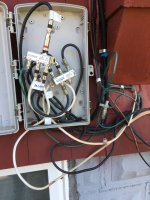shelleyevans
Regular Contributor
Hi!
Before I sell my GoCoax adapters, I thought I would check in here to see if folks have any advice. I'm running an AiMesh system, with a node in the basement that gets poor wifi backhaul, and set up the GoCoax modems to improve speed at that node. (Years ago I used Moca 1.0 adapters all over the house, and found them to be terrific for wifi deadspots.)
Since installing the Moca adapters, I have been having some trouble with my network, primarily reduced speed-- my system gives me 900/40 when I connect to directly to the Arris modem, or to the router without the moca adapters installed, but that speed drops to 600/40 and often less once I attach the GoCoax adapters. Worse, the adapter seems to make the network unstable-- there are many uncorrectable errors on the downstream channels, and the Arris modem periodically seems to drop the connection all together. My ISP download channels never use higher than 600 megahertz (I am attaching a partial picture), so it shouldn't theoretically overlap the Moca range, but I tried enabling only the high range on the GoCoax, to see if that helped things. No joy. I also tried using a Moca-rated splitter before the router, but that, if anything, made the router/modem performance worse. And I do have a Moca POE filter.
In sum, I have great Moca to Moca performance, but an unstable and slow network, possibly because of interference with my Arris modem. Has anybody ever heard of such an issue (I have been reading and reading these threads, and not seeing it), or have a suggestion? I'm out of solutions, and am concluding that high speed internet and high speed moca don't play together well in my house. Thoughts....?
Before I sell my GoCoax adapters, I thought I would check in here to see if folks have any advice. I'm running an AiMesh system, with a node in the basement that gets poor wifi backhaul, and set up the GoCoax modems to improve speed at that node. (Years ago I used Moca 1.0 adapters all over the house, and found them to be terrific for wifi deadspots.)
Since installing the Moca adapters, I have been having some trouble with my network, primarily reduced speed-- my system gives me 900/40 when I connect to directly to the Arris modem, or to the router without the moca adapters installed, but that speed drops to 600/40 and often less once I attach the GoCoax adapters. Worse, the adapter seems to make the network unstable-- there are many uncorrectable errors on the downstream channels, and the Arris modem periodically seems to drop the connection all together. My ISP download channels never use higher than 600 megahertz (I am attaching a partial picture), so it shouldn't theoretically overlap the Moca range, but I tried enabling only the high range on the GoCoax, to see if that helped things. No joy. I also tried using a Moca-rated splitter before the router, but that, if anything, made the router/modem performance worse. And I do have a Moca POE filter.
In sum, I have great Moca to Moca performance, but an unstable and slow network, possibly because of interference with my Arris modem. Has anybody ever heard of such an issue (I have been reading and reading these threads, and not seeing it), or have a suggestion? I'm out of solutions, and am concluding that high speed internet and high speed moca don't play together well in my house. Thoughts....?


